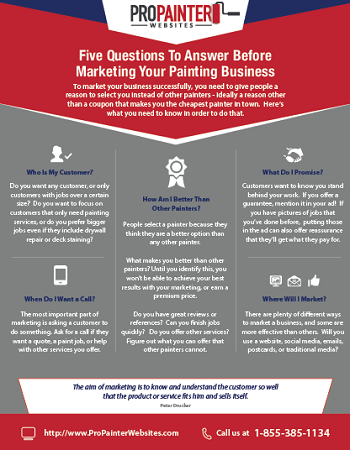Essential Seasonal Aspects Of Commercial Exterior Painting: What You Need To Recognize
Essential Seasonal Aspects Of Commercial Exterior Painting: What You Need To Recognize
Blog Article
Authored By-Korsholm Celik
When you're preparing an industrial outside paint project, seasonal factors can make or damage your results. You'll intend to consider how temperature and humidity effect paint application and drying times. Selecting the right season can ensure your paint adheres correctly and lasts longer. But which periods are genuinely the best for this type of job? Let's check out the crucial elements that can impact your job's success.
The Effect of Temperature Level on Paint Application
When you're intending a commercial exterior paint project, the temperature can substantially impact how well the paint sticks and dries out.
Preferably, you wish to repaint when temperature levels vary between 50 ° F and 85 ° F. If it's also chilly, the paint might not heal correctly, bring about issues like peeling off or fracturing.
On the other side, if it's too hot, the paint can dry out as well rapidly, avoiding appropriate adhesion and resulting in an irregular surface.
You ought to also consider the moment of day; morning or late afternoon provides cooler temperature levels, which can be much more positive.
Constantly examine the maker's suggestions for the particular paint you're using, as they usually supply support on the excellent temperature variety for ideal results.
Humidity and Its Impact on Drying Times
Temperature level isn't the only environmental element that influences your industrial outside painting job; moisture plays a considerable role too. High moisture degrees can reduce drying out times dramatically, influencing the total quality of your paint job.
When the air is filled with wetness, the paint takes longer to cure, which can bring about issues like poor bond and a greater danger of mildew growth. If you're painting on an especially humid day, be planned for extensive wait times between layers.
It's critical to keep track of local climate condition and strategy accordingly. Preferably, aim for humidity levels in between 40% and 70% for optimum drying.
Keeping these factors in mind guarantees your project remains on track and supplies a lasting surface.
Best Seasons for Commercial Exterior Paint Projects
What's the very best time of year for your commercial exterior painting tasks?
Spring and early fall are typically your best options. During these seasons, temperature levels are moderate, and humidity degrees are commonly reduced, developing excellent problems for paint application and drying out.
Prevent summertime's intense heat, which can cause paint to completely dry too promptly, resulting in bad bond and surface. In house painting denver , winter's cool temperature levels can hinder correct drying and treating, taking the chance of the durability of your paint task.
Aim for days with temperature levels between 50 ° F and 85 ° F for optimal outcomes. Remember to examine the neighborhood weather prediction for rain, as wet conditions can wreck your project.
house staining golden valley around these elements guarantees your painting project runs smoothly and lasts longer.
Final thought
Finally, preparing your business exterior paint jobs around seasonal factors to consider can make a significant distinction in the result. By scheduling job throughout the optimal temperature levels and moisture degrees, you'll guarantee much better bond and drying out times. Bear in mind to keep an eye on local weather forecasts and choose the right time of year-- spring and early loss are your best options. Taking these steps will certainly assist you accomplish a resilient and professional finish that lasts.
